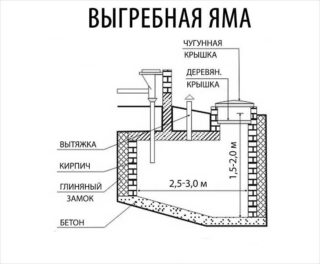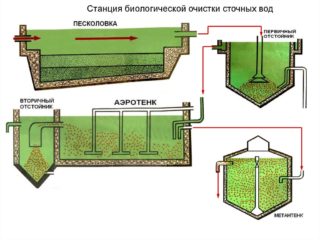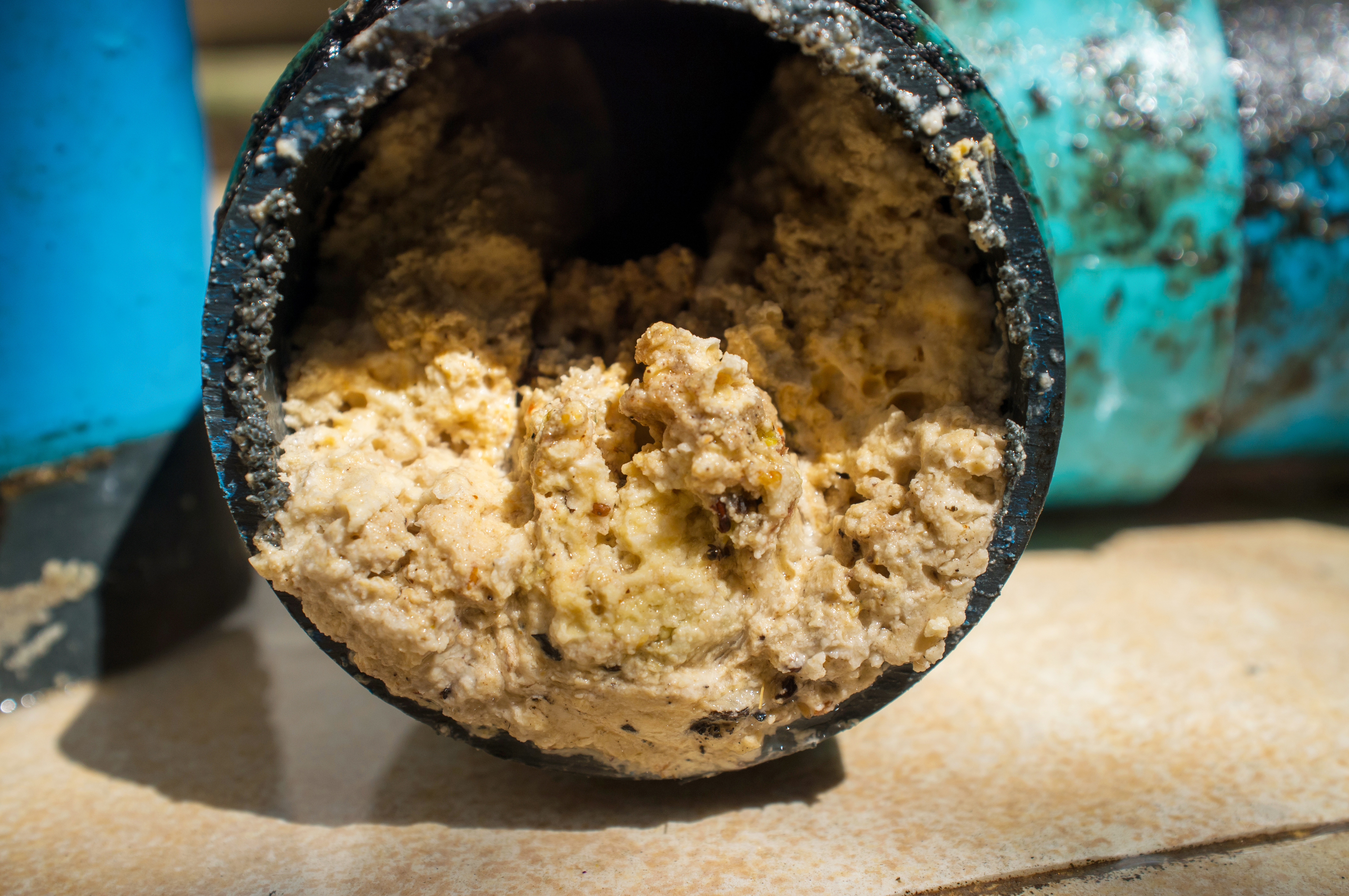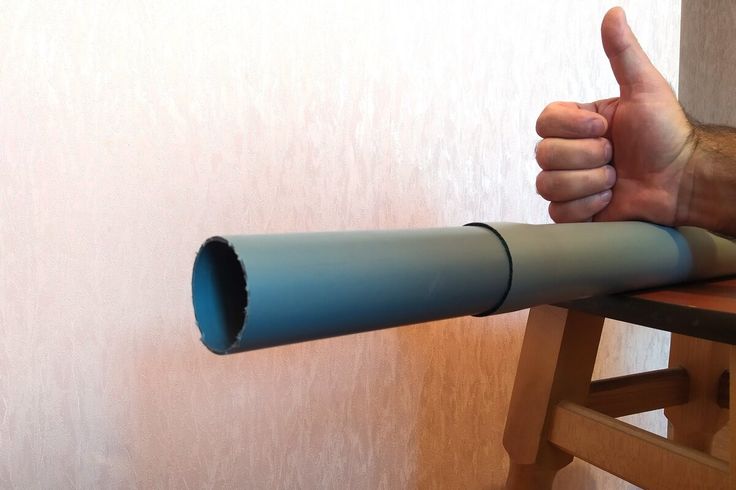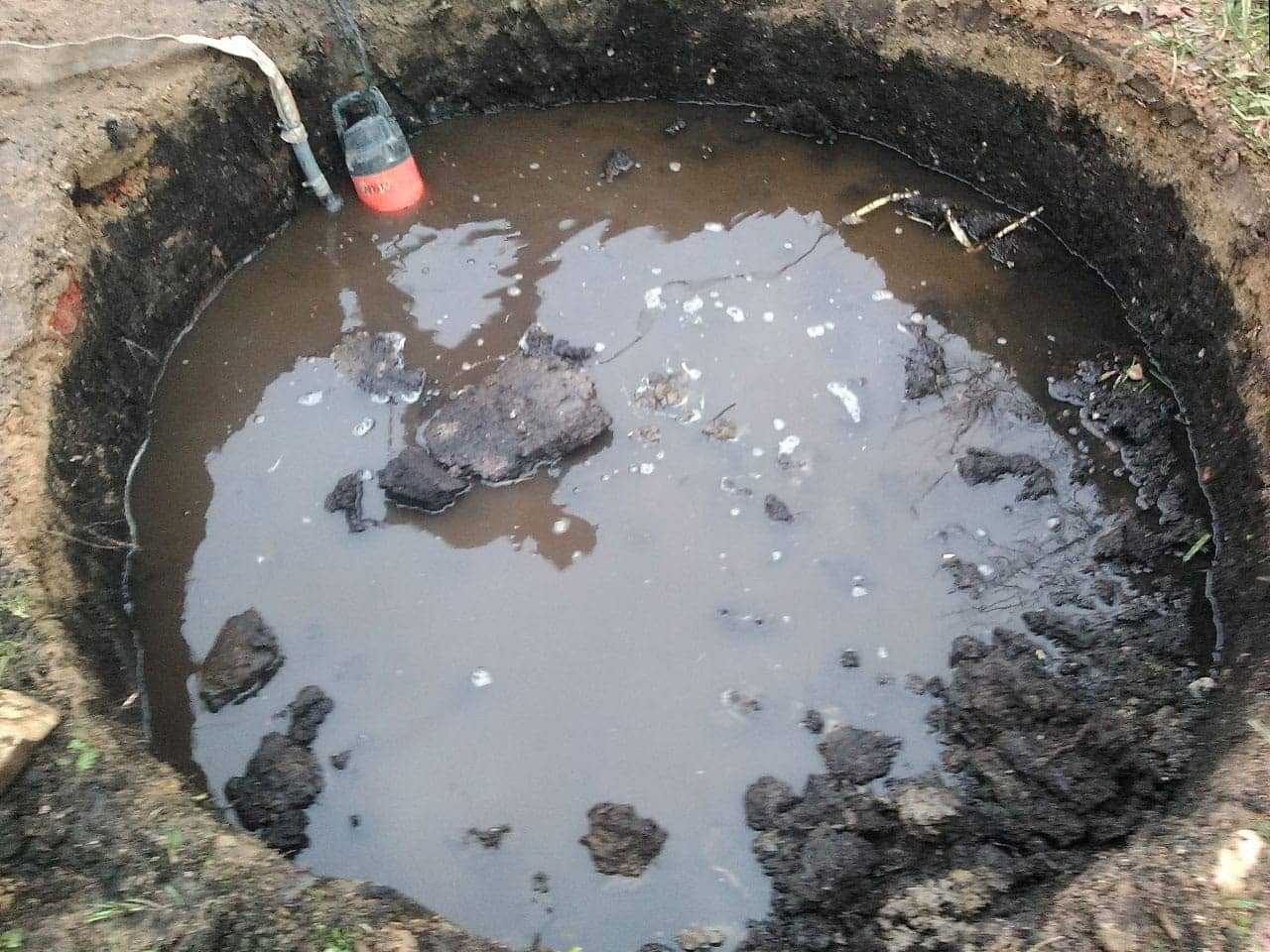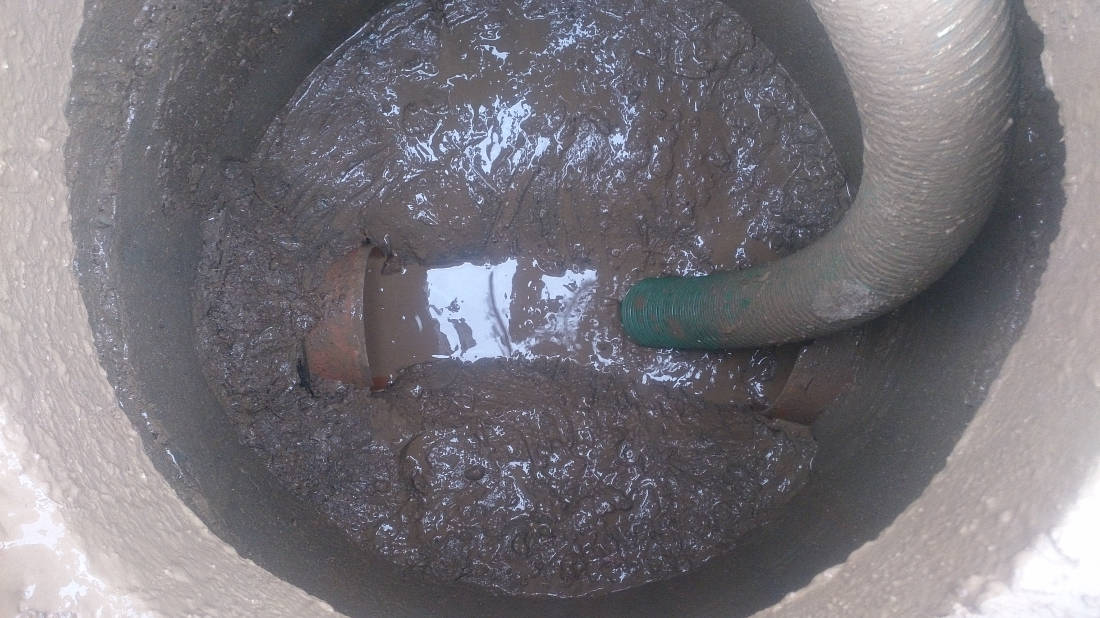The choice of a local sewage treatment device assumes taking into account such factors as the topography of the territory, features of the soil and climate, the number of residents and the amount of water consumed. The design characteristics and functionality of the treatment plant are also important. Taking into account these factors, as well as reviews about autonomous sewers of owners of private houses, you can choose an economical and effective option.
Types of autonomous sewers for a private house
Cesspools
These are the simplest sewerage devices. They are assembled by hand as follows:
- Sealed tanks made of plastic or concrete rings are deepened into the ground. Sometimes the pit is laid out with bricks, followed by sealing.
- From the internal sewerage of the building to the tank, a pipeline with a cross section of 110 mm is pulled at a slight slope in the direction of the drain. The depth of its laying should be below the level of soil freezing.
- When the pit is 75 percent full, they call special sewage equipment to collect sewage.
The frequency of pumping out wastewater depends on the speed of filling the pit. There should be no less than 35 cm between the soil surface and the water, so that impurities do not infect the fertile layer.
Among the advantages of the design are environmental safety with timely pumping out, ease of installation and a budget price. The device is non-volatile. But drainage from the pit must be regularly pumped out. If the ground sources are high, the structure is ineffective. It is better to equip cesspools in summer cottages or in small private houses with a small number of residents.
Septic devices

Septic tanks are used to purify wastewater. They consist of one, two or three chambers, complemented by a filtration well, infiltrator and aerator. Structures are made of durable polymers or concrete rings.
All VOC reservoirs go deeper into the ground and are connected by communication lines above the level of ground sources.
The difference from a cesspool is that autonomous septic devices not only accumulate wastewater, but also clarify it using filters and anaerobic bacteria. In the first chamber, the sludge settles, in the subsequent ones - further purification of the liquid.
The advantages of septic tanks are their energy independence and the ability to use clarified water for technical needs.
The reservoirs need to be cleaned periodically and replenished with beneficial microorganisms. They choose a septic sewage system for a country house in cases where residents are there year-round.
It is undesirable to install single-chamber septic tanks on clay soils or in areas with a high location of underground sources. In these cases, a three-chamber treatment plant with a biofilter is purchased.
Biological purification systems
- receiving chamber;
- aerotank;
- secondary sedimentation tank;
- active sludge stabilizer.
In the receiving chamber, heavy suspensions settle to the bottom, fat particles are separated. Further, the liquid undergoes double purification by microorganisms, the activity of which is constantly stimulated by the supply of oxygen.After filtration, almost pure water is obtained at the outlet. It is not worth drinking, but it is quite suitable for watering a vegetable garden and a garden.
Install similar systems in areas with any soil. There is no need to pump out effluents, only a routine inspection and the addition of bacteria-purifiers. They are poured through the drain holes of plumbing fixtures.
It is an environmentally friendly and odorless device. It is suitable for large cottages with permanent residence, since one station is capable of processing up to one and a half cubic meters per day.
General selection criteria
To avoid an emergency, the following indicators must be taken into account:
- Distance to nearby communications and buildings. The distance from the treatment plant to water supply points or buildings should not be less than 10 m, to a vegetable garden and garden - a meter.
- Soil composition and groundwater level. This factor is important for cesspools and septic tanks. If the water table is high, such structures will not work.
- The number of residents, the amount of water consumed and the "salvo discharge". It is higher if there is a lot of plumbing in the house - the water flows in a large flow. In this case, a powerful multi-chamber cleaner is needed.
- Uninterruptible power supply. If the house is not supplied with electricity, only non-volatile structures can be installed.
All sewerage devices have their own advantages and disadvantages, they are designed for different income levels of owners, area and hydrogeological features of the territory. Manufacturers offer ready-made devices, the installation of which requires a minimum of time and cost. If there is no desire or opportunity to use a cesspool, it is worth choosing one of the types of septic tanks.
Consumer reviews
- "Topas 8" brand "Eco-Grant". Users note that the station works completely silently, even when the hatch is open, only a slight gurgle is heard. There is a slight smell only in the first month of work, when the bacteria are still taking root. It does not lose functionality in cold and hot weather. Does not float even with high groundwater.
- Genezis brand "Deka". The device is controlled by a GSM module. In an emergency, it will call the foremen at home, but such situations, according to users, are extremely rare. Compared to other devices, it does not smell at all.
- "Astra 5" brand "Unilos". The cleaning station, according to users, works like a clock. The economy of the device is noted with high functionality.
Based on the reviews, ratings of the most popular and effective devices are created. According to their data, you can choose a suitable system among those of equal technical characteristics.
Rating of autonomous sewers for a country house:
| A place | Model | Distinctive features |
| Inexpensive non-volatile septic tanks | ||
| 1 | "Rostock Mini" | Stability of work. |
| 2 | "Termit Profi 1.2" | Increased strength. |
| 3 | "Tank-1" | Budget value with good performance. |
| Biological treatment systems | ||
| 1 | "Topas 8" | Economy and efficiency. |
| 2 | "Poplar" | Favorable price / quality ratio. |
| 3 | "Astra 5" | Stability of work. |
All these data are indicative. The best autonomous sewage system is selected depending on the individual conditions of its installation.
You can do the installation of a simple treatment plant with your own hands, but technically complex devices with power supply will require the involvement of professionals. It is not worth risking an expensive device and the health of loved ones.

